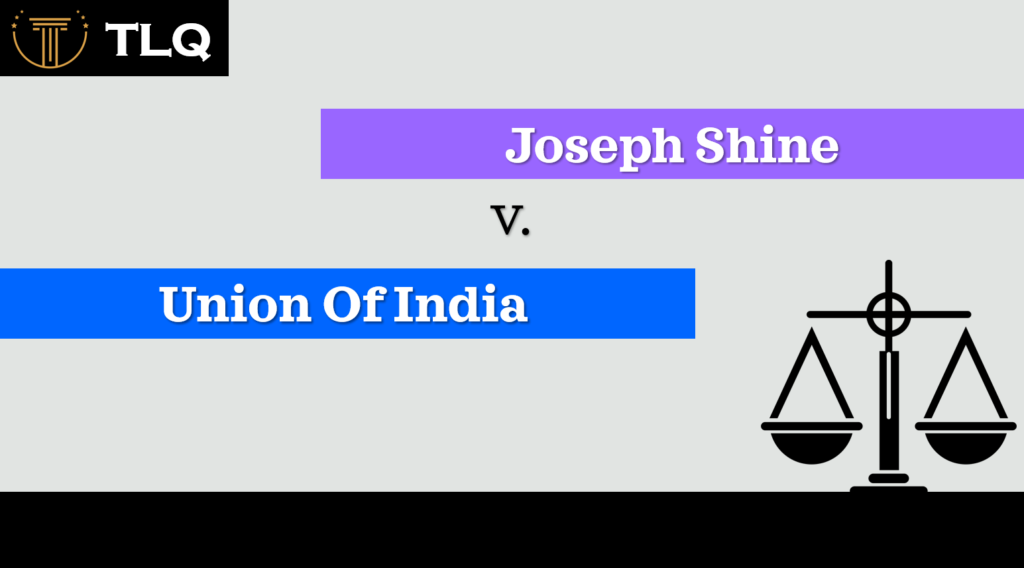Published On: 24th July 2025
Authored By: Dhruv Vohra
Amity Law School, Noida
INTRODUCTION
‘IP’ refers to creations of the human mind, such as inventions, literary and artistic works, designs, symbols, names, and images used in commerce. It is an intangible asset, meaning it is not a physical object but rather the legal ownership of an idea, creation, or expression. The main objective of Intellectual Property (IP) is to safeguard the use of innovations, artistic works, and inventions, ensuring that creators can control and benefit from their work.
Intellectual Property Right (IPR) is a legal entitlement granted over a creation of the mind, allowing the creator to exclusively exploit it for a specified period. Intellectual Property, often abbreviated as IP, enables individuals to possess and control their creativity and innovations just as they would physical property. The owner of IP can control its usage and receive compensation for it. This protection fosters innovation and creativity, ultimately benefiting society as a whole.
The role of IPR is to encourage innovation, foster creativity, and protect the rights of creators. It plays a vital role in economic growth, technological development, and cultural expression. Intellectual property rights have been defined as ideas, inventions, and creative expressions for which society is willing to recognize ownership through legal rights.
IPRs grant certain exclusive rights to the inventors or creators, enabling them to gain commercial benefits from their creative efforts or reputation. A patent, for example, is a recognition of an invention that meets the criteria of global novelty, non-obviousness, and industrial applicability. IPRs hold significant importance in the corporate sector.
IPRs have two primary areas of impact in the pharmaceutical industry. First, there is the issue of pricing and access, where discussions focus on the relationship between IPRs—particularly patent rights—the exclusion of competitors, and the availability and affordability of new medicines. Second, there is the matter of research and development (R&D) incentives. IPRs play a crucial role in encouraging the discovery, development, and marketing of new drugs, influencing R&D expenditure and its distribution across diseases, regions, and organizations.
There are six types of IPR –
PATENT – Patents are granted for inventions that introduce a novel method of doing something or offer a technical solution to a problem. They protect both inventions and innovations. A patent has a duration of 20 years and grants the inventor exclusive rights to use, manufacture, sell, or license the invention during this period.
Example – Graham Bell’s invention of the telephone is a patented invention.
Many features in smartphones, such as touchscreen technology, camera systems, and specific software algorithms, are protected by patents.
COPYRIGHT – Copyright protects original works of authorship such as books, music, films, software, and derivative works. The creator has exclusive rights to reproduce, distribute, display, perform, and create derivative works. Copyright usually lasts for the lifetime of the author plus 50 to 70 years, depending on the jurisdiction.
Example – The Harry Potter series by J.K. Rowling is protected by copyright.
Movies like Titanic or The Lion King are covered under copyright laws.
Music: Songs like Shape of You by Ed Sheeran are copyrighted.
TRADEMARKS – Trademarks include symbols, words, or other identifiers used in commerce to distinguish goods or services from others. The duration is 10 years but is renewable indefinitely. Trademarks protect brands, logos, and distinctive signs used in business. The trademark owner has exclusive rights to use the mark in commerce and to prevent others from using similar marks.
Example – The iconic Nike ‘Swoosh’ is a trademark that distinguishes its products.
Coca-Cola and the unique bottle shape are both trademarked.
The Apple logo and brand name are also registered trademarks.
TRADE SECRETS – Trade secrets encompass confidential business information that provides a competitive advantage, such as formulas, processes, or designs. They protect proprietary knowledge with no time limitation, lasting as long as the secret remains undisclosed.
Example – The secret formula for Coca-Cola is one of the most famous trade secrets in the world.
GEOGRAPHICAL INDICATIONS (GI) – GI identifies goods originating from a specific region that possess qualities, reputation, or characteristics inherent to that location.
Example –
Champagne: Only sparkling wine from the Champagne region in France can be labeled as Champagne.
Darjeeling Tea: Tea from the Darjeeling region of India is protected under GI laws.
Parmigiano Reggiano: Only cheese produced in specific regions of Italy can be called Parmigiano-Reggiano.
DESIGNS – Design protection covers the unique visual appearance of a product. Industrial design refers to the aesthetic or ornamental aspects, which may include shape, pattern, and color. The duration ranges from 10 to 25 years.
Example –
Coca-Cola Bottle Design: The distinctive shape of the Coca-Cola bottle is protected as an industrial design.
Furniture Design: Many companies, such as IKEA, have patented designs for their furniture products.
IPR ROLE AS THE WORLD GLOBAL
IPR laws are implemented globally to ensure creators’ rights are protected through various international treaties and regional systems:
-
WIPO (World Intellectual Property Organization) – A United Nations agency that facilitates international cooperation on IP matters.
-
TRIPS (Trade-Related Aspects of Intellectual Property Rights) – A World Trade Organization agreement that sets global minimum standards for IPR protection.
-
Regional Systems – Include the European Patent Office (EPO), ASEAN IP System, and African Regional Intellectual Property Organization (ARIPO).
Challenges: Enforcing IPR laws across international borders remains a major issue, along with concerns regarding privacy and regulatory inconsistencies.
There are many advantages of IPR LAW like –
-
There Are No Extra Fees Connected With IP
There are no mandatory fees each time a business modifies or enhances its product. However, it is strongly advised to apply for formal patent protection once the invention is finalized, to safeguard future benefits. -
Career Opportunities
There is a wide range of promising career options in IPR law, including:
-
IPR Attorney / Lawyer – Advises clients on IPR matters, drafts and files applications for patents, trademarks, and copyrights, and represents clients in disputes.
-
IP Analyst – Conducts research and analysis of the IPR landscape, identifies potential patentable inventions, and evaluates their commercial viability.
-
IP Manager – Oversees an organization’s IPR portfolio, including creation, protection, and enforcement of its IP assets.
-
Legal Adviser – Provides legal guidance on IPR-related issues to businesses and individuals.
Perks of Pursuing a Career in IPR:
-
High Demand – With the rise of innovation, technology, and global trade, professionals in IPR are in great demand and often receive attractive salaries.
-
International Exposure – IPR careers offer opportunities to work with global clients and multinational organizations.
Importance of IPR
-
Encourages Innovation – Granting exclusive rights motivates individuals and companies to invest in research and development.
-
Economic Growth – IPR contributes significantly to job creation, revenue generation, and global trade.
-
Consumer Protection – Trademarks and copyrights help consumers identify the origin and quality of products and services.
-
Cultural Development – Protection of artistic works promotes cultural expression and the free exchange of ideas.
Challenges in IPR
-
Infringement and Piracy – Unauthorized use of protected content, particularly in digital formats, is widespread.
-
Global Enforcement – Variability in IPR enforcement across countries complicates cross-border protection.
-
Balancing Interests – IPR laws must strike a balance between protecting creators and ensuring public access to information and innovation.
Piracy and Counterfeiting
This remains a rampant issue in the digital age, involving unauthorized duplication and distribution of software, music, and movies. Industries such as pharmaceuticals and luxury goods are especially vulnerable.
Enforcement Issues
There are significant disparities in how IPR is enforced across different countries. Lengthy legal procedures and high litigation costs often discourage creators from initiating legal action to protect their rights.
Digital Transformation
The emergence of AI-generated content, NFTs, and digital assets introduces new legal challenges. It is increasingly difficult to define ownership, originality, and accountability in these evolving areas.
Access vs. Monopoly
This presents an ethical dilemma between rewarding innovation and ensuring public access to essential knowledge—particularly in areas like healthcare (e.g., COVID-19 vaccines), where excessive restrictions could hinder access to life-saving products.
Global Framework and Organizations
Several international treaties and organizations govern IPR across borders:
-
World Intellectual Property Organization (WIPO) – A UN agency that promotes global IP cooperation.
-
Agreement on Trade-Related Aspects of Intellectual Property Rights (TRIPS) – A WTO agreement that sets minimum IPR standards for member countries.
-
Paris Convention and Berne Convention – Treaties that protect industrial property and literary or artistic works, respectively.
Conclusion
After thoroughly examining the article, it becomes clear how essential IP protection has become in safeguarding artistic, literary, and technological innovations. These legal protections allow businesses and individuals to maintain a distinct identity in the marketplace. Therefore, it is strongly recommended to seek IP protection and utilize its benefits. As technology continues to evolve and globalization accelerates, strengthening IPR laws and enforcement mechanisms is increasingly important. This ensures creators’ rights are preserved and promotes fair competition in the global market.



